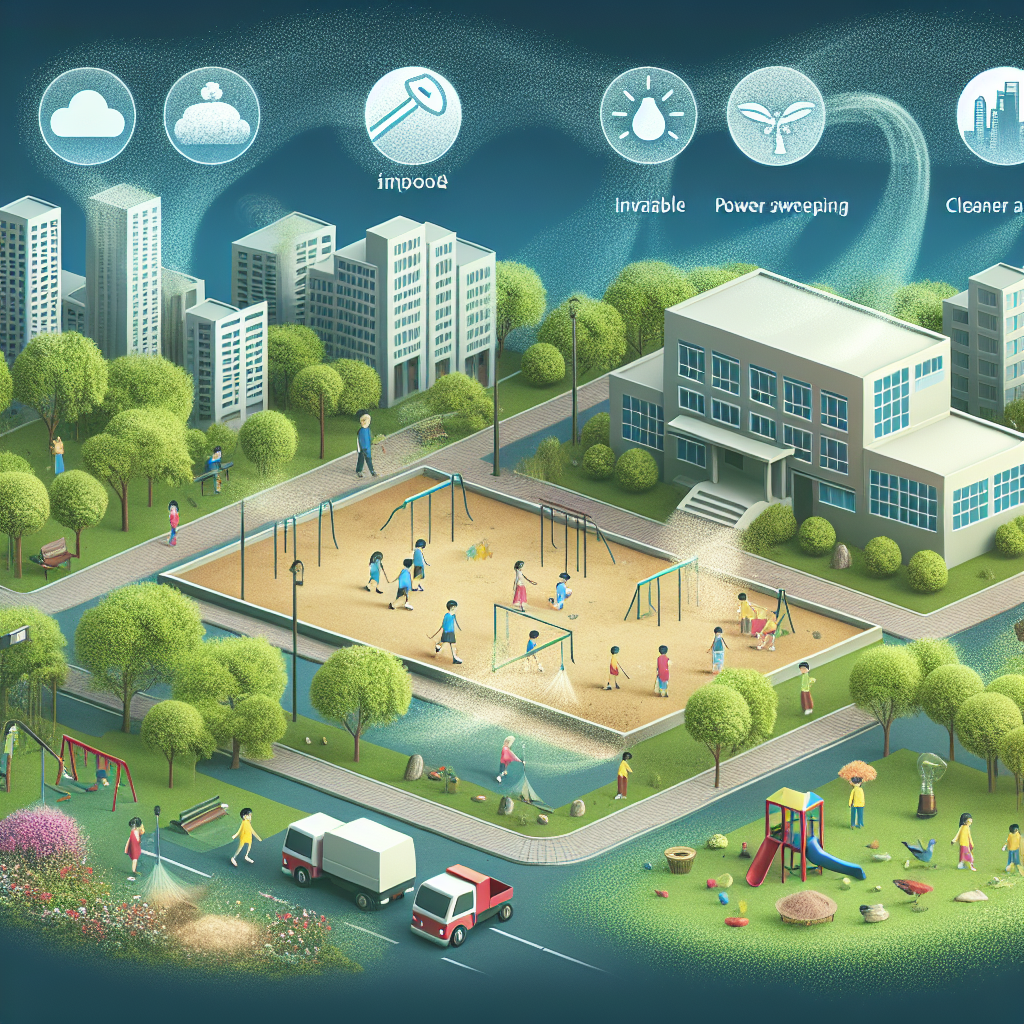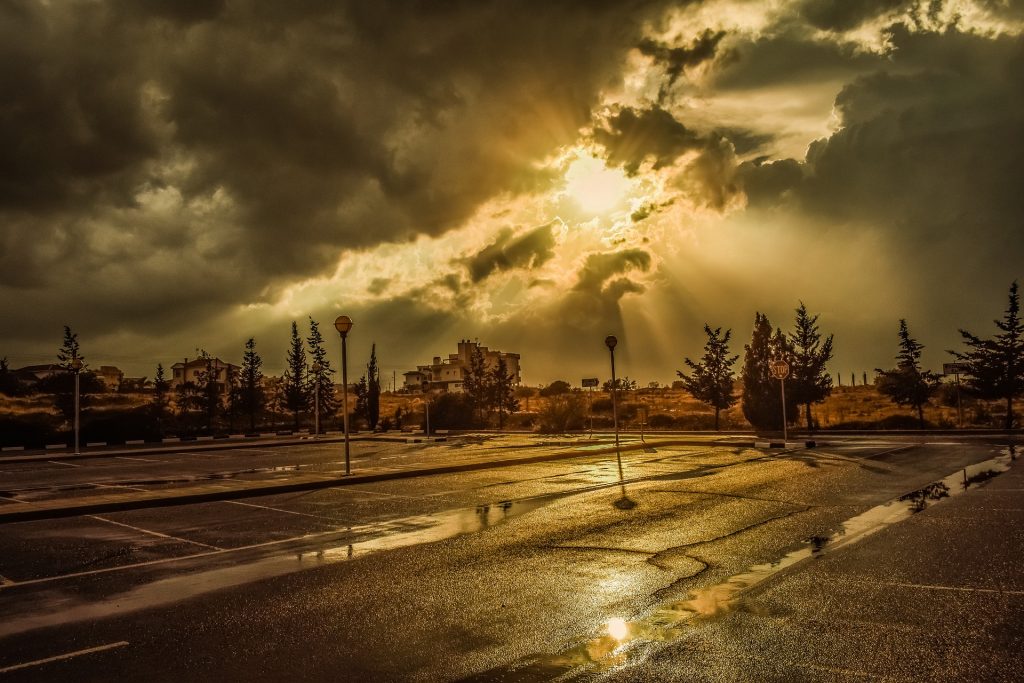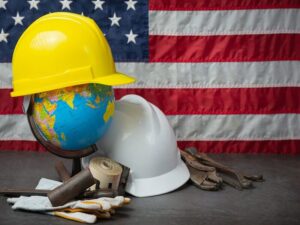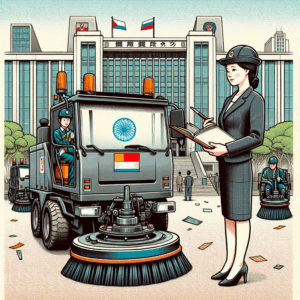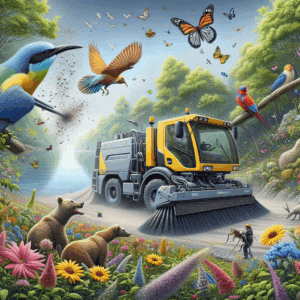Power sweeping might sound like a complex term, but it's really just a way to keep our parks and schoolyards clean. Imagine a mighty machine, like a vacuum cleaner on wheels, zooming around and picking up dirt, leaves, and other debris. But while it's great for tidying up, how does it affect the air quality in the places where we learn and play?
First, let's understand why keeping these areas clean is important. Schools and parks are where students and families spend a lot of time. It's where we play sports, have picnics, and hang out with friends. If there's a lot of trash or leaves lying around, it can not only be unpleasant to look at but can also attract pests and cause allergies.
Power sweeping helps clean up these areas efficiently. But, like many machines, power sweepers can stir up dust and particles that are already on the ground. This can temporarily increase the amount of dust in the air. In the short term, some people might find this dust annoying, especially if they have allergies or breathing issues like asthma.
However, good news! Most modern power sweepers are designed to minimize the amount of dust they kick up into the air. Some even have filters that trap dust particles so they don't just blow all over the place. This makes them much friendlier for the environment and the people enjoying the parks and schoolyards.
Now, why is air quality such a big deal? Clean air is super important for our health. Breathing in clean air helps us think better, feel more energetic, and avoid getting sick. For kids and teachers spending a lot of time in schools, and everyone having fun in the parks, maintaining good air quality is essential.
So, what can we do to ensure power sweeping helps rather than harms our air quality? Here are a few suggestions:
-
Regular Maintenance: Ensure that power sweepers are well-maintained. This means cleaning their filters and checking to see they don't leak fuel. Well-maintained machines work better and pollute less.
-
Timing the Sweeping: It's smart to schedule power sweeping during times when fewer people are around, like early in the morning or late in the afternoon. This way, fewer people are exposed to any dust that might get stirred up.
-
Raise Awareness: Schools and park authorities can inform the community about when sweeping will take place. This helps people avoid the area during sweeping times if they are concerned about dust.
-
Encourage Alternatives: Sometimes, using brooms or manual tools for smaller cleaning tasks can be a great alternative to machines. It’s quieter and doesn’t add any dust to the air.
-
Plant More Trees and Plants: Having more greenery around helps improve air quality naturally by filtering dust and pollutants. Plus, plants make the area look nicer and provide shade.
In summary, power sweeping helps keep our parks and schools neat and tidy, which is important for our health and happiness. While there's a small chance it can stir up dust, proper management and use of the right equipment can minimize any negative impact. By taking a few thoughtful steps, we can enjoy both cleaner grounds and fresh air, making our schools and parks healthier, happier places to be.

